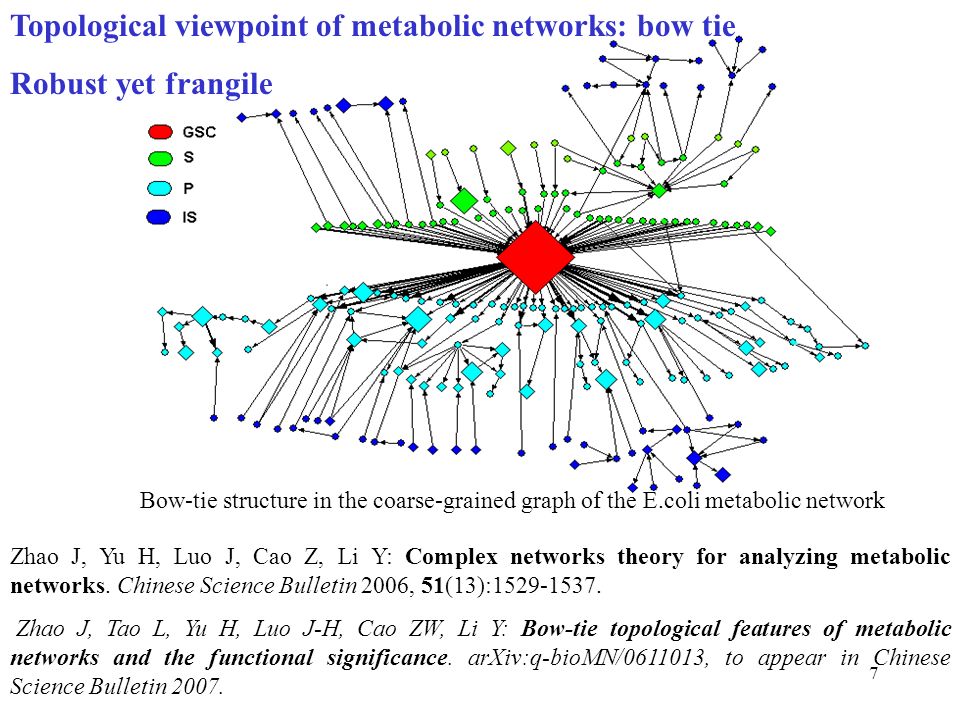Targeting and Controlling Viral Systems → Accessing and Untying the “Bow-Tie” DNA Blueprint of COVID-19

Israel, your resilience and command of bio-tech and innovation precedes you; Germany your government’s culture exemplifies organization and economic structure; China, better than other nations, you understand first-hand the architecture of viruses and bacteria; and Russia, your experience with the internet, system networks, and space stations speaks for itself (International Space Station).
Ladies and Gentlemen, overseeing your research, we are attuned with your scientists and engineers’ findings and hi-tech developments. In the interim, permit me to share mine.
My model’s plan is to target and control the COVID-19 viral system. By accessing the blueprint of COVID-19 we can digitize and untie its “Bow-Tie.”
“The bow-tie structure opens the door to a vulnerability…it’s difficult to identify and block harmful agents. In the case of the Internet, it takes only a short piece of code to produce a digital virus that can spread quickly to millions of computers and cause billions of dollars of damage. In living organisms, real viruses hijack cells in much the same way.” – Carl Zimmer, Discover Magazine, 2007
System Networks and Logistics
“Control theory is at the center of modern technology.” – John C. Doyle, Professor at California Institute of Technology, October 25, 2007
Outbreaks of Escherichia coli (E.coli) seem to occur yearly as do flu outbreaks. Bacterium and viruses are fascinating. In my childhood readings of microbes and later microbiology research, I found each to be in a controlled network all its own, a powerful system.
Looking intently over its microscopic level, I began to understand that E.coli must derive its strength from some highly organized controlled network. I learned the importance of Microbes in human and animal species and their role in the organism’s internal system.
An avid salad eater, I was intent in finding out why E.coli reemerges. Gazing up towards my data panel with images and graphs depicting various social networks of organisms, I found the architectural blueprint of a microbe or virus was similar to that of human social networks and population outbreaks of diseases. Suddenly, the connections became clearer as I turned my gaze to the images of system networks within the grandeur network, the internet.
Proponents of net neutrality easily compare the net to “highways in the sky.” Simply put, it’s elementary, but we’re no longer First Graders. To be fair, I do not fully comprehend all technical jargon. However, few if any in government, truly understand the internet or for that matter social media and networks.
Again, to be fair, I am not fully briefed on all the interfaces of operating systems and networks. But, I do not make policy or attempt to “regulate” those who reportedly are restricting the lanes in these so called “highways in the sky.” So, who controls the net? It may seem complicated, but so are organisms. And that may very well be by design.
Control of the internet is an illusion, some argue. Others may disagree. Discover Magazine Carl Zimmer in his 2007 article “This Man Wants To Control the Internet (And You Should Let Him),” speaks with this man and shares his insights.
In his interview with John C. Doyle, Professor at California Institute of Technology, Zimmer notes that “The reason the bacterium works so well, Doyle finds, is that it is organized in much the same way as the Internet.” Their organizational similarities make sense as do our use in language describing its bugs and viruses. Funny, we don’t say a bee crashed J
Familiarity with the language helps us to better understand the inner workings of bugs, just as one would a person or in this case bacteria. Interestingly, what you find is that “E.coli turns its building blocks into DNA, protein . . . On the internet, data packets reach a computer, where they can be reassembled into the original e-mail, YouTube videos . . .” Elementary, right? But how can something so easy to comprehend be so complicated?
Zimmer goes on to say that “Control theorists, roughly speaking, try to understand how complicated things can run efficiently, quickly, and safely instead of crashing, exploding, or otherwise grinding to a halt.” Note that Zimmer is not referring to a vehicle, jet, or electrical grid but bacterium.
Doyle’s E.coli and internet comparison is brilliant. His design depiction is that of a “bow-tie.” Basically, “A bow-tie organization allows both the Internet and E.coli to run quickly and efficiently.” However, it appears that even if one gets to the micro level to try to change the architectural blueprint of the microbe or virus, it becomes challenging “Because of the homogenization that occurs at the hearth of the bow-tie, it’s difficult to identify and block harmful agents.” Evidently, this problem stems at both the micro and macro levels.
At first glance, dark matter on the head of lettuce is easy to spot. Yet, Romaine lettuce which bares a darkish, reddish, greenish leaf is a lot more difficult as E.coli continues to reemerge. Similarly, as “In the case of the Internet, it takes only a short piece of code to produce a digital virus that can spread quickly to millions of computers and cause billions of dollars of damage.” By comparison, the extent of damage resulting from eating a “bad” lettuce may only extend to your family or friends.
Right, but this still does not explain why E.coli reemerges. Is there an invincible inner strength? As Zimmer and Doyle point out “E.coli’s metabolism is nothing if not robust, able to easily withstand significant environmental fluctuations.” In other words, it not only derives its robustness from its organizational structure but adapts. By contrast, robustness and adaption are two key characteristics few human organisms have.
Before accessing an organism’s bow-tie we first need to know how it’s structured and lines of communication. First, recall that “Both the Internet and E.coli are conceptually organized like a bow-tie, with a broad fan of incoming material flowing into a central knot and then flowing into another broad fan of outgoing material.” Sound familiar?
E.coli and the Net have communication and transportation schemes which run parallel to that of carriers “packets of data, a little like using the standardized waybills and boxes provided by FedEx.” After placing an order online the end user receives their packet much the same way a sender’s email is received by a recipient.
A Primum Movens, E.coli understands logistics and controls its supply chains. “Rather than use such a huge, slow system, E.coli just points all its metabolic pathways into the same bow-tie knot, making everything from the same raw materials.” Pretty efficient and resourceful right? Now, let’s use its strength against it and track it.
Tracking the COVID-19 Bow-tie
Examining the COVID-19 outbreak, my attention turned to my earlier research in microbes and system networks. The blueprints I had referred to in my earlier comparisons appeared like matching templates. Doyle seems to have also “discovered remarkably precise parallels between living networks and technological ones.”
I found the key was in accessing the virus’ network, creating a digital display, genetically engineer a pathway via bio markers or electronic circuits and finally cut the lines of communication. First, ideally the plan would be to access a bacterium: In digitizing E.coli’s network system, applying it to real time analysis, we can modify its system framework.
Research in digitization and use of electronic chips can be found in the Israel Institute for Biological Research (IIBR) March 5, 2020 paper, “Programming Escherichia coli to function as a digital display.” Authors posit:
“Synthetic genetic circuits offer the potential to wield computational control over biology… we present advances that enable the complete encoding of an electronic chip in the DNA carried by Escherichia coli (E.coli). This project is an exemplar of design automation pushing engineering beyond that achievable “by hand”, essential for realizing the potential of biology. A complete electronic chip is encoded in Escherichia coli DNA by combining genetic circuit design automation (Cello) with more accurate mathematical models and gates with reduced impact on the host cell.”
Programing and digitizing E.coli, a similar application can be designed to access the COVID-19 DNA blueprint and its system network allowing for targeting and controlling its viral systems. Finally, accessing and untying its “bow-tie.”
I propose three possible formulations to offset COVID-19 bow-tie organization:
1. Access the data packets before they arrive where the “the message fragments in each packet are extracted and reassembled.”
2. Environmental fluctuations. Consider that “When E.coli is heated to dangerous temperatures, for example, it can rapidly churn out thousands of heat-shock proteins, molecules that help protect the microbe’s workings. When the temperature falls, the heat-shock proteins quickly get dismantled.” Set up experiments to examine extreme viruses’ response to nearing or below 0 Celsius degrees.
Applied to moderate viruses, a possible channel is cutting off its lines of communication. In a January 18, 2017 Nature article, “Communication between viruses guides lysis–lysogeny decisions,” the authors found that “Temperate viruses can become dormant in their host cells, a process called lysogeny. In every infection, such viruses decide between the lytic and the lysogenic cycles, that is, whether to replicate and lyse their host or to lysogenize and keep the host viable.”
Research points to the importance of E.coli communication scheme, “We term this communication system the ‘arbitrium’ system… The arbitrium system enables a descendant phage to ‘communicate’ with its predecessors, that is, to estimate the amount of recent previous infections and hence decide whether to employ the lytic or lysogenic cycle.”
3. Bait the bacterium with a genetically modified amino acid. As Zimmer points out, “Normally E.coli can synthesize all the amino acids it needs for making proteins. But if it can get a certain kind of amino acid from the environment, that information shuts down its own production line.” Not realizing in time it was baited with an amino acid that counters protein production, E.coli line of production remains shut down.
In targeting COVID-19, the key is to penetrate the virus “arbitrium’ system” and compromise its lines communication. Doing so allows entry of its structure. Accessing “The bow-tie structure opens the door to a vulnerability…”
Once in, untie it and cut communication. Virus is disabled.
SDC Radars Detect Earth Space Communications
A worldview from Space Defense Command (SDC), we see the lines of communication restored between the International Space Station (ISS) and its earth member nations amidst a world pandemic.
Observation has detected North America and the Island Kingdom racing to charge the Russian Federation with attempted “hacking” of their systems for research data on COVID-19 vaccines. It seems odd. Either these actions are in haste or in desperation.
The question arises: In light of the research I have presented here, why would these “hackers” turn to the North Pacific 50 States or the North Atlantic Kingdom when clearly Israel, China, Germany, and Russia are the countries to “hunt for” vaccine discovery?
If the purpose is to obtain academic or pharma “patented” formulations, then clearly the focus should be on the U.S. as I note in my July 2019 paper, “U.S. Dangerous Troika? – Physician, Pharma, and Hospital” at https://matlockreport.com/2019/07/
“Patent Docs list the “Top 100 Universities Worldwide Granted U.S. Patents in 2016.” Kevin E. Noonan notes the “The National Academy of Inventors and the Intellectual Property Owners Association report…Overall, universities were granted 6,768 patents…”
American Astronauts are set to land on earth on the 2 of August 2020. Yanks, you have worked in the same space station as the Russkies, Canadians, Japanese, and Europeans. Conducting research miles away from earth I imagine the ISS is immune from cyberattacks.
Да. Perhaps on your return you can put to rest recent charges against Russia? Or, are you Yanks prepared to build your own space station? 🙂
